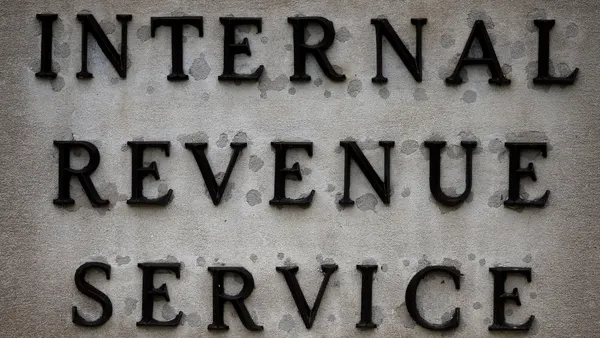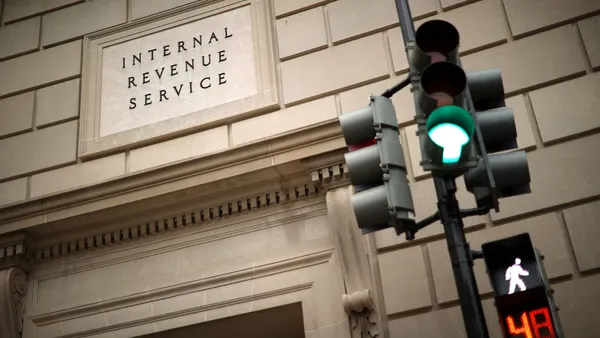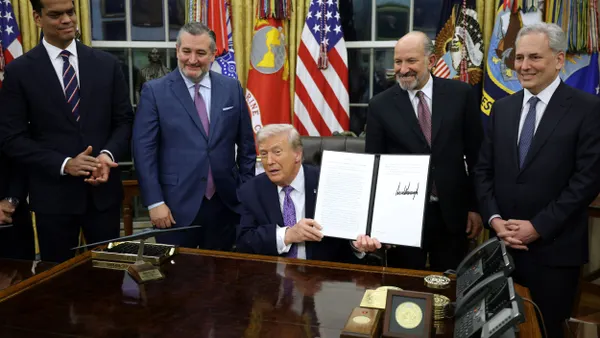Dive Brief:
- Acting Comptroller of the Currency Michael Hsu warned of “complacency” over the end to the use of the London Interbank Offered Rate (LIBOR) on Dec. 31, highlighting a risk of instability at banks that fail to make a smooth switch to an alternative reference rate.
- “Complacency can have a profound negative effect on bank operations, safety and soundness,” Hsu said during a webcast on Tuesday, underscoring that after this year no new financial contracts may use LIBOR, the reference rate for more than $200 trillion in mortgages, derivatives, business loans and other financial contracts worldwide. LIBOR, derived from London banks' estimates of what they would be charged when borrowing from other banks, was the subject of a manipulation scandal in 2012.
- “Let’s face it, there are still people out there who believe that some way, somehow, LIBOR will not be discontinued but will survive as a `synthetic LIBOR,’ or as some have called it, a ‘zombie LIBOR,’” Hsu said. “Let me clear, the federal financial regulators have said no new LIBOR exposures — zombie or otherwise — after December 31, 2021, and we mean it.”
Dive Insight:
As LIBOR sunsets, regulators including the Federal Reserve and Securities and Exchange Commission have staged a full court press to encourage corporate treasurers, banks and other financial market participants to switch to a new benchmark rate.
“Failure to adequately prepare for LIBOR’s discontinuance could undermine financial stability and institutions’ safety and soundness and create litigation, operational and consumer protection risks,” five federal financial agencies said Wednesday in a joint statement.
The regulators have endorsed the Secured Overnight Financing Rate (SOFR), which is based on overnight repurchase agreements secured by U.S. Treasuries.
The final fixings for most LIBOR rates — including one-week and two-month U.S. dollar LIBOR — will be made on Dec. 31, 2021, but other U.S. dollar tenors may continue until June 30, 2023.
“Complacency also may be a temptation in some quarters where folks believe that they simply do not have any LIBOR exposure at all,” Hsu said, noting that the largest banks use LIBOR in lending, derivatives and market-making.
“Banks of all sizes, however, must look outside these activities to determine whether they have LIBOR exposures in other contexts,” Hsu said, noting that a bank may rely on a vendor that uses LIBOR to value borrower collateral, bank assets or in other calculations.
“Even if none of these considerations currently present issues for the bank, management should still be screening new investments and activities for embedded LIBOR,” he said.
Although quickening in recent months, adoption of alternative reference rates has been slow, especially for corporate loans.
Large financial institutions used alternatives to LIBOR for less than 1% of corporate loans and 8% of derivatives during the second quarter, Fed Vice Chair Randal Quarles said in a recent speech, adding that Fed supervisors will require faster adoption of other benchmarks.
The number of open interest SOFR futures contracts hit a record high of 1,008,709 at the end of September, and the average daily volume of contracts traded rose 147% during the month compared with September 2020, according to CME Group, the operator of a derivatives exchange. Yet contracts linked to SOFR are just a small portion of the market.
“LIBOR cessation and replacement is an incredibly important issue facing the global financial system,” Hsu said.
“The main headline is, this is not a ‘make the change, leave it and forget it,’” he said. “There has to be constant attention and vigilance.”













